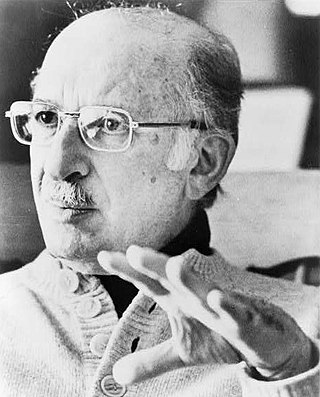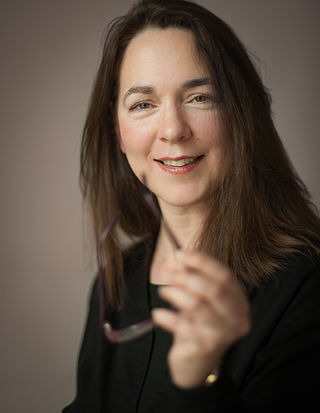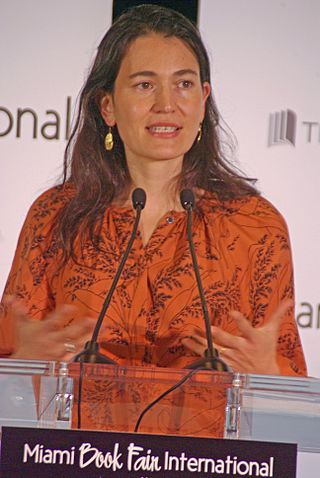
Dictation: A Quartet (2008) is the seventh collection of short stories by American Author Cynthia Ozick.

Dictation: A Quartet (2008) is the seventh collection of short stories by American Author Cynthia Ozick.
Dictation
The secretaries of Henry James and Joseph Conrad have a brief lesbian affair, and hatch a scheme to switch a paragraph from each of their bosses' new works.
Actors
An ageing Jewish actor with an Irish-sounding stage name lands the role of King Lear in an off-Broadway play written by the daughter of a famous Yiddish performer. Originally published in The New Yorker , and later in Cynthia Ozick Collected Stories.
At Fumicaro
An American man travels to the fictional town of Fumicaro, Italy, for a conference on Catholicism. While there, he meets a young chambermaid who is pregnant out of wedlock. He decides to marry her and take her back home to New York. The story takes place in the 1930s, after Benito Mussolini has taken power in the country. The characters in the story portray an eerie ambivalence to the idea of fascism. Originally published in The New Yorker , and later in Cynthia Ozick Collected Stories.
What Happened to the Baby
A young woman is directed to take care of her uncle, an eccentric man in the middle of creating a new universal language called "GNU," following his divorce. Originally published in The Atlantic , and later in Cynthia Ozick Collected Stories.
Michael Upchurch of the Seattle Times stated Ozick "hits a peak of verve and acuity" and that Dictation offered "an ideal introduction" to her work. [1] Abraham Socher in Commentary wrote that Dictation distills the theme of "tension between the monotheistic ban on idolatry and the desire to usurp God by creating beauty... despite the fact that its best stories are not ostensibly about Jews or Judaism at all". [2] For the Publishers Weekly reviewer, it was a "carefully honed, sharply intelligent new collection of four stories", which showed "Ozick at the height of her stylistic powers". [3]

Elwyn Brooks White was an American writer. He was the author of several highly popular books for children, including Stuart Little (1945), Charlotte's Web (1952), and The Trumpet of the Swan (1970).

James Arthur Baldwin was an African American writer and civil rights activist who garnered acclaim for his essays, novels, plays, and poems. His 1953 novel Go Tell It on the Mountain has been ranked by Time magazine as one of the top 100 English-language novels. His 1955 essay collection Notes of a Native Son helped establish his reputation as a voice for human equality. Baldwin was an influential public figure and orator, especially during the civil rights movement in the United States.

Bernard Malamud was an American novelist and short story writer. Along with Saul Bellow, Joseph Heller, Isaac Bashevis Singer, Norman Mailer and Philip Roth, he was one of the best known American Jewish authors of the 20th century. His baseball novel, The Natural, was adapted into a 1984 film starring Robert Redford. His 1966 novel The Fixer, about antisemitism in the Russian Empire, won both the National Book Award and the Pulitzer Prize.

Daniel Gillespie Clowes is an American cartoonist, graphic novelist, illustrator, and screenwriter. Most of Clowes's work first appeared in Eightball, a solo anthology comic book series. An Eightball issue typically contained several short pieces and a chapter of a longer narrative that was later collected and published as a graphic novel, such as Like a Velvet Glove Cast in Iron (1993), Ghost World (1997), David Boring (2000) and Patience (2016). Clowes's illustrations have appeared in The New Yorker, Newsweek, Vogue, The Village Voice, and elsewhere. With filmmaker Terry Zwigoff, Clowes adapted Ghost World into a 2001 film and another Eightball story into the 2006 film, Art School Confidential. Clowes's comics, graphic novels, and films have received numerous awards, including a Pen Award for Outstanding Work in Graphic Literature, over a dozen Harvey and Eisner Awards, and an Academy Award nomination.

Lionel Mordecai Trilling was an American literary critic, short story writer, essayist, and teacher. He was one of the leading U.S. critics of the 20th century who analyzed the contemporary cultural, social, and political implications of literature. With his wife Diana Trilling, whom he married in 1929, he was a member of the New York Intellectuals and contributor to the Partisan Review.

Lorrie Moore is an American writer, critic, and essayist. She is best known for her short stories, some of which have won major awards. Since 1984, she has also taught creative writing.
Dictation can refer to:
Cynthia Ozick is an American short story writer, novelist, and essayist.

Sally Benson was an American writer of short stories, screenplays, and theatre. She is best known for her humorous tales of modern youth collected in Junior Miss and her semi-autobiographical stories collected in Meet Me in St. Louis.

Nicole Krauss is an American author best known for her four novels Man Walks into a Room (2002), The History of Love (2005), Great House (2010) and Forest Dark (2017), which have been translated into 35 languages. Her fiction has been published in The New Yorker, Harper's, Esquire, and Granta's Best American Novelists Under 40, and has been collected in Best American Short Stories 2003, Best American Short Stories 2008 and Best American Short Stories 2019. In 2011, Nicole Krauss won an award from the Anisfield-Wolf Book Awards for Great House. A collection of her short stories, To Be a Man, was published in 2020 and won the Wingate Literary Prize in 2022.

Charles Anthony D'Ambrosio, Jr is an American short story writer and essayist.

Mark Howard Podwal was an American artist, author, filmmaker and physician. He may have been best known initially for his drawings on The New York Times Op-Ed page. In addition, he is the author and illustrator of numerous books. Most of these works—Podwal's own as well as those he has illustrated for others—typically focus on Jewish legend, history and tradition. His art is represented in the collections of the Metropolitan Museum of Art, the Victoria and Albert Museum, the Israel Museum, the National Gallery of Prague, the Jewish Museums in Berlin, Vienna, Stockholm, Prague, New York, among many other venues.
Alfred Chester was an American writer known for his provocative, experimental work, including the novels Jamie Is My Heart's Desire and The Exquisite Corpse and the short story collection Behold Goliath.

A Thurber Carnival is a revue by James Thurber, adapted by the author from his stories, cartoons and casuals, nearly all of which originally appeared in The New Yorker. It was directed by Burgess Meredith with James Starbuck serving as associate director. Following a six city tryout, during which Thurber continued to rewrite the show, it premiered on Broadway on February 26, 1960, and ran for 223 performances, with a break from June 25 to September 5. It closed on November 26, 1960. The title is similar to that of The Thurber Carnival (1945), Thurber's most successful collection of stories and drawings.
The Shawl is a short story first published by Cynthia Ozick in 1980 in The New Yorker. It tells the story of three characters: Rosa, Magda, and Stella on their march to an internment in a Nazi concentration camp. The Shawl is noted for its ability to instill in the reader the horror of the Holocaust in less than 2,000 words.

The Early Stories: 1953–1975, published in 2003 by Knopf, is a John Updike book collecting much of his short stories written from the beginning of his writing career, when he was just 21, until 1975. Only four stories published in this entire time period have been omitted from this collection by John Updike himself: "Intercession", and "The Pro", "One of My Generation", and "God Speaks". The majority of the stories were originally published in The New Yorker magazine. In 2004, the book received the PEN/Faulkner Award for Fiction.

The Pagan Rabbi and Other Stories (1971) is the second book and first collection of stories published by American author Cynthia Ozick. "The Pagan Rabbi" and "Envy; or, Yiddish in America", along with an interview with the author, were later collected as an audio book in 1989 read by Ron Rifkin and Mitchell Greenberg.

Benjamin Taylor is an American writer whose work has appeared in a number of publications including The Atlantic, Harper's, Esquire, Bookforum, BOMB, the Los Angeles Times, Le Monde, The Georgia Review, Raritan Quarterly Review, Threepenny Review, Salmagundi, Provincetown Arts and The Reading Room. He is a founding member of the Graduate Writing Program faculty of The New School in New York City, and has also taught at Washington University in St. Louis, the Poetry Center of the 92nd Street Y, Bennington College and Columbia University. He has served as Secretary of the Board of Trustees of PEN American Center, has been a fellow of the MacDowell Colony and was awarded the Iphigene Ochs Sulzberger Residency at Yaddo. A Trustee of the Edward F. Albee Foundation, Inc., he is also a Fellow of the New York Institute for the Humanities at New York University and a Guggenheim Fellow for 2012 - 2013. Taylor's biography of Marcel Proust, Proust: The Search, was published in October 2015 by Yale University Press as part of its newly launched Yale Jewish Lives series.
Elena Ferrante is a pseudonymous Italian novelist. Ferrante's books, originally published in Italian, have been translated into many languages. Her four-book series of Neapolitan Novels are her most widely known works. Time magazine called Ferrante one of the 100 most influential people in 2016.
Michael Gorra is an American professor of English and literature, currently serving as the Mary Augusta Jordan Professor of English Language and Literature at Smith College, where he has taught since 1985.